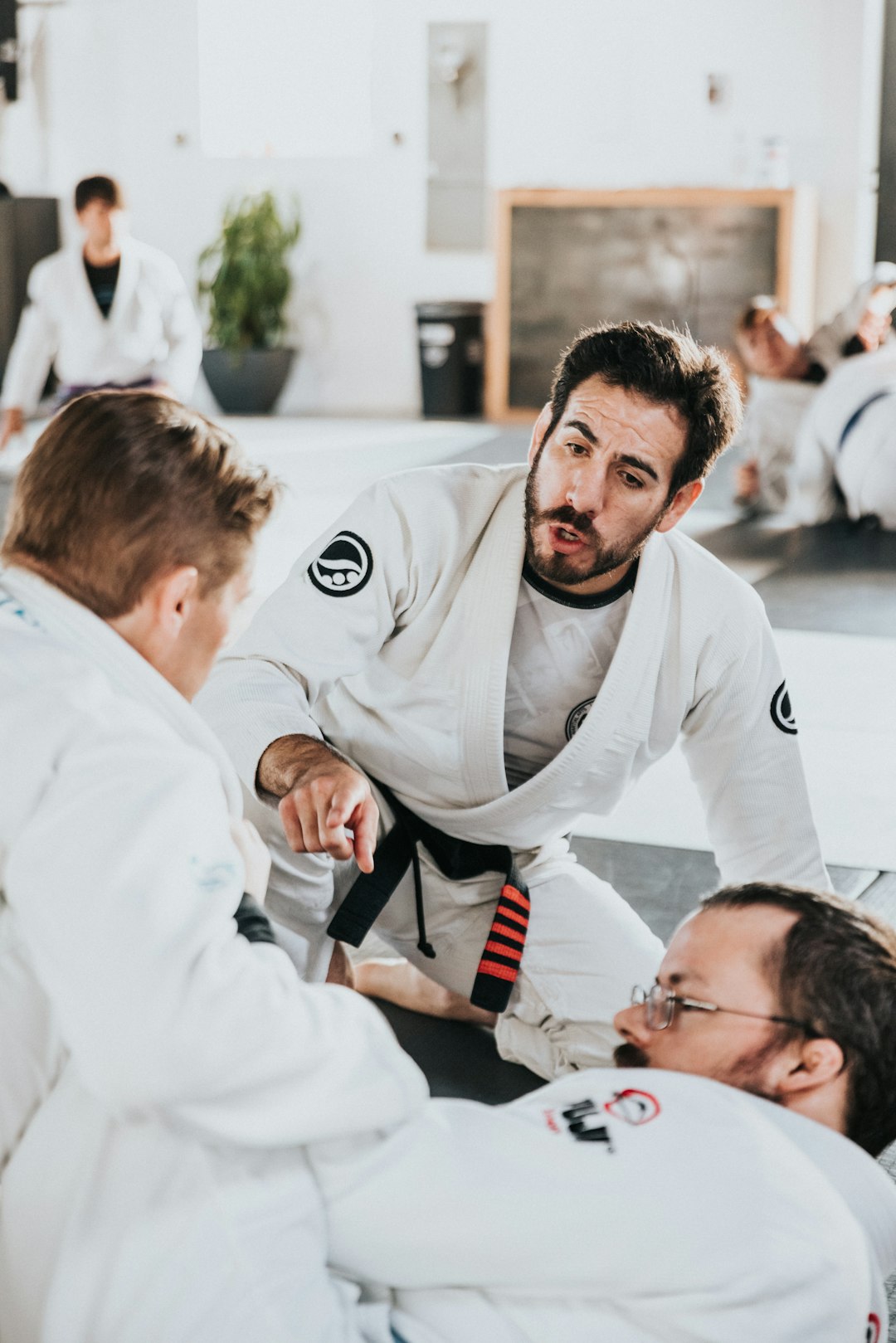Support our educational content for free when you purchase through links on our site. Learn more
Discover 10 MMA Fighting Styles You Need to Know for Success in 2024! 🥋✨
Are you ready to step into the world of Mixed Martial Arts (MMA) and discover the secrets behind its most effective fighting styles? In this comprehensive guide, we’ll explore 10 unique MMA fighting styles that every aspiring fighter should master. From the explosive kicks of Muay Thai to the strategic submissions of Brazilian Jiu-Jitsu, understanding these disciplines will give you a competitive edge and elevate your game.
Imagine this: a fighter enters the cage, their heart pounding, adrenaline coursing through their veins. They’ve trained tirelessly, blending techniques from various styles to create a unique fighting approach. With every punch, kick, and grappling move, they embody the essence of MMA. But which styles should they focus on to maximize their potential? 🤔
Did you know that the early days of MMA were marked by no-holds-barred competitions, where fighters from different backgrounds battled it out with minimal rules? As the sport evolved, so did the need for a structured approach to training and competition. In this article, we’ll uncover the history, strategies, and rules that shape the world of MMA today.
So, lace up those gloves, and let’s dive into the fascinating world of MMA fighting styles!
Key Takeaways
- Diversity of Styles: MMA incorporates a wide range of disciplines, including Brazilian Jiu-Jitsu, Muay Thai, Wrestling, and more, allowing fighters to develop unique approaches.
- Understanding Strengths and Weaknesses: Knowing your own strengths and your opponent’s weaknesses is crucial for success in the cage.
- Safety Measures: Modern MMA prioritizes fighter safety with strict regulations and medical examinations.
- Women in MMA: The sport has seen a significant rise in female fighters, breaking barriers and inspiring future generations.
- Amateur Pathway: Competing in amateur MMA events is an essential step for aspiring professionals to gain experience and develop skills.
Ready to gear up for your MMA journey? 👉 Shop MMA Gear on:
- Everlast: Amazon | Everlast Official
- Venum: Amazon | Venum Official
- RDX Sports: Amazon | RDX Official
Let’s get started! 🥊💪
Table of Contents
- Quick Tips and Facts
- Understanding MMA Fighting Styles: A Deep Dive
- Timeline of Major Events in MMA History
- The Evolution of Mixed Martial Arts: From Underground to Mainstream
- Popular MMA Organizations and Their Impact
- Key Rules and Regulations in MMA Competitions
- Top 10 Common Disciplines in MMA Fighting Styles
- Basic Strategies for Success in MMA
- Women in MMA: Breaking Barriers and Making History
- Amateur Mixed Martial Arts: The Path to Professionalism
- Safety Measures in MMA: Protecting Fighters
- The Legality of Professional MMA Competitions
- Notes on MMA Fighting Styles
- Conclusion
- Recommended Links
- FAQ
- Reference Links
Get ready to dive into the world of MMA fighting styles! 🥋💥
Quick Tips and Facts
- MMA, or Mixed Martial Arts, is a full-contact combat sport that allows striking and grappling, both standing and on the ground, making it one of the most dynamic and exciting sports in the world. 🌎💥
- No single fighting style is “best” for MMA. Successful fighters often blend techniques from various disciplines to create a unique and effective style. Just like Bruce Lee said, “Adapt what is useful, reject what is useless.” 👊
- Training is key! MMA requires incredible physical and mental conditioning. You’ll need to develop strength, speed, agility, flexibility, and endurance. 🏋️♀️💨
- Safety first! Always train with qualified instructors and wear appropriate safety gear. Remember, MMA is a sport, not a street fight. ⛑️
Understanding MMA Fighting Styles: A Deep Dive
MMA is a melting pot of combat disciplines, each with its own strengths and weaknesses. Let’s explore some of the most popular styles:
Striking Styles:
- Boxing: The sweet science! 🥊 Boxing is all about footwork, head movement, and delivering powerful punches with precision and speed. Think Muhammad Ali’s lightning-fast jabs or Mike Tyson’s devastating hooks.
- Muay Thai: Known as “the art of eight limbs,” Muay Thai utilizes punches, kicks, elbows, knees, and clinch work. 🇹🇭 Picture devastating roundhouse kicks to the legs and body, sharp elbows in the clinch, and knee strikes that can end a fight in an instant.
- Kickboxing: A broad term encompassing various styles that combine kicks and punches. 🦵💥 Kickboxing can be a great base for developing powerful kicks and combinations.
Grappling Styles:
- Brazilian Jiu-Jitsu (BJJ): The gentle art? Don’t let the name fool you! 🥋 BJJ focuses on taking the fight to the ground, where practitioners use leverage and technique to control and submit opponents with joint locks and chokes. Think Royce Gracie dominating the early UFCs with his BJJ prowess.
- Wrestling: From takedowns to pins, wrestling is all about controlling your opponent’s movement. 🤼♂️ Wrestlers are known for their incredible strength, balance, and ability to dictate where the fight takes place.
- Judo: Similar to wrestling, Judo emphasizes throws and takedowns, but also includes a strong emphasis on submissions. 🇯🇵 Judo techniques can be devastating in MMA, as a well-executed throw can end a fight quickly.
Hybrid Styles:
Many fighters develop hybrid styles, blending techniques from different disciplines to create a unique and effective approach. For example, a fighter might combine the striking of Muay Thai with the takedowns of wrestling and the submissions of BJJ. This adaptability is what makes MMA so exciting and unpredictable! Want to see how different styles can be combined? Check out this article about What Style of Fighting Does John Wick Use? Unveiling 10 Techniques Behind His Legendary Combat Skills! 2024 ⚔️.
Timeline of Major Events in MMA History

- Ancient Times: While not exactly MMA as we know it, ancient combat sports like Pankration in Greece and Lei Tai in China featured elements of mixed fighting. 🏛️⚔️
- Early 20th Century: Vale Tudo, a no-holds-barred fighting style, gains popularity in Brazil. This era also sees the rise of Judo and the early development of Brazilian Jiu-Jitsu. 🇧🇷
- 1976: The “Thrilla in Manila” it ain’t! Muhammad Ali boxes Antonio Inoki in a bizarre exhibition match that many consider a precursor to modern MMA. 🥊🤼♂️
- 1993: The Ultimate Fighting Championship (UFC) holds its first event, pitting fighters from different styles against each other with minimal rules. Royce Gracie, a Brazilian Jiu-Jitsu black belt, dominates the competition, proving the effectiveness of ground fighting. 🏆
- Late 1990s – Early 2000s: MMA faces criticism and regulation challenges due to its violent nature. However, organizations like the UFC implement rules and weight classes to improve fighter safety and legitimize the sport. ⚖️
- 2000s – Present: MMA experiences a surge in popularity, becoming a global phenomenon. The UFC emerges as the premier MMA organization, with stars like Chuck Liddell, Randy Couture, Georges St-Pierre, Anderson Silva, and Jon Jones captivating audiences worldwide. 💪🌎
The Evolution of Mixed Martial Arts: From Underground to Mainstream
MMA has come a long way from its early days as a no-holds-barred spectacle. Let’s explore its journey:
The Early Days: No Holds Barred and the Rise of BJJ
The early 1990s saw the birth of the UFC, a tournament designed to determine the most effective fighting style. With minimal rules and a focus on brutal finishes, early UFC events were wild and unpredictable. Royce Gracie’s dominance using Brazilian Jiu-Jitsu revolutionized the martial arts world, proving that size and strength weren’t everything. BJJ became the foundation for many aspiring MMA fighters.
The Need for Rules and the UFC’s Transformation
As MMA gained popularity, it also faced criticism for its violence and lack of regulation. To address these concerns, the UFC implemented rules, weight classes, and safety measures. These changes helped to legitimize the sport and pave the way for its mainstream acceptance.
The Modern Era: A Global Phenomenon
Today, MMA is a multi-billion dollar industry, with millions of fans worldwide. The UFC is the undisputed king of MMA, but other organizations like Bellator, ONE Championship, and the PFL are gaining traction. MMA fighters are now considered elite athletes, training in multiple disciplines and adhering to strict dietary and conditioning regimens.
Popular MMA Organizations and Their Impact
The world of MMA is vast, with numerous organizations hosting events and showcasing talented fighters. Here are a few of the most prominent:
- Ultimate Fighting Championship (UFC): The undisputed king of MMA, the UFC is based in Las Vegas, Nevada, and boasts a roster of the best fighters in the world. UFC events are broadcast globally, attracting millions of viewers and generating massive revenue. 🌎💰
- Bellator MMA: A distant second to the UFC, Bellator is nonetheless a significant player in the MMA landscape. Bellator has a reputation for signing exciting fighters and putting on entertaining events.
- ONE Championship: Based in Singapore, ONE Championship is a major force in Asian MMA. ONE is known for its unique ruleset, which allows for both MMA and Muay Thai bouts. 🇸🇬
- Professional Fighters League (PFL): The PFL sets itself apart with its unique season format, where fighters compete in a regular season followed by playoffs and a championship. This format adds an element of strategy and intrigue to the sport.
Key Rules and Regulations in MMA Competitions
MMA may seem like a free-for-all, but it’s actually a highly regulated sport with specific rules to ensure fighter safety and fair competition.
The Unified Rules of MMA
Most major MMA organizations, including the UFC, follow the Unified Rules of Mixed Martial Arts. These rules cover everything from weight classes and round lengths to fouls and judging criteria.
Weight Classes: Ensuring Fair Fights
MMA has various weight classes to create a level playing field. Fighters must weigh in at or below the limit for their designated weight class. This system helps to prevent mismatches and ensures that fighters are competing against opponents of similar size and strength.
Round Format and Duration: Setting the Pace
MMA fights typically consist of three five-minute rounds, with a one-minute rest period between rounds. Championship fights often go five rounds. The round format allows fighters to pace themselves and recover from intense exchanges.
Fouls and Penalties: Keeping it Clean (Relatively)
While MMA is a full-contact sport, certain actions are considered fouls. These include:
- Strikes to the back of the head
- Eye gouging
- Biting
- Hair pulling
- Fish hooking
- Groin strikes
- Intentionally attacking the spine
- Small joint manipulation
Referees can issue warnings, deduct points, or even disqualify fighters for repeated or egregious fouls.
Judging Criteria: Determining the Winner
If a fight goes the distance, three judges score each round based on the following criteria:
- Effective Striking: Landing significant strikes that cause damage or disrupt the opponent’s rhythm.
- Effective Grappling: Controlling the opponent on the ground, attempting submissions, or landing ground-and-pound.
- Cage Control: Dictating the pace and location of the fight, pushing the opponent back, and controlling the center of the cage.
- Aggression: Moving forward, initiating exchanges, and dictating the pace of the fight.
- Defense: Avoiding the opponent’s strikes, defending takedowns, and escaping submissions.
The judges’ scores are tallied at the end of the fight to determine the winner.
Top 10 Common Disciplines in MMA Fighting Styles
While MMA is a blend of various fighting styles, some disciplines are more prevalent and influential than others. Let’s break down the top 10:
- Brazilian Jiu-Jitsu (BJJ): The foundation for many MMA fighters’ ground games, BJJ focuses on submissions, positional control, and transitions. BJJ practitioners are known for their ability to control and submit opponents on the ground.
- Wrestling: Essential for takedowns, takedown defense, and controlling where the fight takes place. Wrestlers often dictate the pace and location of the fight, taking opponents down and keeping them there.
- Boxing: The foundation for striking in MMA, boxing teaches fighters how to throw punches with power, accuracy, and footwork. Boxers are known for their head movement, combinations, and ability to control distance.
- Muay Thai: Known for its devastating kicks, knees, elbows, and clinch work. Muay Thai fighters are renowned for their toughness and ability to deliver powerful strikes from all angles.
- Kickboxing: A broad term encompassing various styles that combine kicks and punches. Kickboxing provides a solid base for developing powerful kicks and combinations.
- Judo: Emphasizes throws, takedowns, and submissions, Judo can be highly effective in MMA. Judo practitioners are known for their ability to throw opponents with force, potentially ending the fight quickly.
- Sambo: A Russian martial art and combat sport that combines aspects of Judo, wrestling, and striking. Sambo practitioners are known for their throws, leg locks, and aggressive fighting style.
- Karate: A diverse martial art with various styles, some of which emphasize full-contact sparring and practical self-defense techniques. Karate can provide a foundation for striking, particularly kicks and punches.
- Taekwondo: Known for its dynamic and powerful kicking techniques, Taekwondo can be effective in MMA for delivering fast, high-impact kicks.
- Capoeira: An Afro-Brazilian martial art that blends elements of dance, acrobatics, and music. While not as common as other styles in MMA, Capoeira can provide unique movement patterns and unorthodox striking techniques.
Basic Strategies for Success in MMA
MMA is a complex and dynamic sport, but there are some basic strategies that can increase your chances of success:
1. Know Your Strengths and Your Opponent’s Weaknesses
Every fighter has strengths and weaknesses. Are you a strong striker with a weak ground game? Or are you a grappling specialist who struggles with striking? Identify your strengths and weaknesses, then analyze your opponent’s fighting style to exploit their weaknesses and avoid playing into their strengths.
2. Dictate the Pace and Location of the Fight
Don’t let your opponent control the fight. If you’re a better striker, keep the fight standing. If you excel at grappling, take the fight to the ground. Use footwork, angles, and feints to control the distance and dictate where the fight takes place.
3. Be Adaptable and Unpredictable
MMA is a fluid and dynamic sport. Your opponent may surprise you, or the fight may not go according to plan. Be prepared to adapt your strategy and adjust to changing circumstances. Don’t be afraid to mix up your striking and grappling, and keep your opponent guessing.
4. Manage Your Energy Wisely
MMA fights are physically and mentally demanding. Don’t waste energy on wild swings or desperate takedown attempts. Pace yourself, conserve your energy, and choose your shots wisely.
5. Train Consistently and Intelligently
Success in MMA requires dedication, discipline, and intelligent training. Find a reputable gym with experienced coaches, develop a well-rounded skillset, and train consistently to improve your strength, conditioning, and technique.
Women in MMA: Breaking Barriers and Making History

For years, MMA was seen as a predominantly male sport. However, women have been steadily breaking down barriers and establishing themselves as a force to be reckoned with inside the cage.
Pioneers of Women’s MMA
Pioneers like Gina Carano and Cristiane “Cyborg” Justino helped to pave the way for women in MMA, showcasing their skills and athleticism to a global audience. Their exciting fighting styles and undeniable talent challenged preconceived notions and helped to change the perception of women in combat sports.
Ronda Rousey and the Rise of Women’s MMA
Ronda Rousey’s meteoric rise to fame brought unprecedented attention to women’s MMA. Her dominant performances and charismatic personality captivated audiences worldwide, inspiring countless women to train in MMA and pursue their own fighting dreams.
A New Generation of Stars
Today, women’s MMA is more popular and competitive than ever before. Fighters like Amanda Nunes, Valentina Shevchenko, Zhang Weili, and Rose Namajunas are considered among the best pound-for-pound fighters in the world, regardless of gender. They continue to break records, inspire fans, and elevate the sport to new heights.
Amateur Mixed Martial Arts: The Path to Professionalism
For many aspiring MMA fighters, the journey begins with amateur competition. Amateur MMA provides a platform for fighters to gain experience, develop their skills, and test themselves against other up-and-coming athletes.
Benefits of Competing as an Amateur
- Gaining Experience: There’s no substitute for experience inside the cage. Amateur competition allows fighters to get accustomed to the pressure of a real fight, refine their techniques, and develop their fight IQ.
- Developing Skills: Amateur MMA allows fighters to experiment with different styles, strategies, and techniques without the pressure of a professional record. It’s a time for growth and learning.
- Building a Network: Amateur MMA events attract fighters, coaches, and fans from all over. It’s a great opportunity to network, make connections, and potentially find a team or gym that’s a good fit.
Finding Amateur MMA Events
Amateur MMA events are held regularly across the country. You can find events near you by contacting local gyms, searching online for amateur MMA organizations, or checking out websites and forums dedicated to MMA.
Safety Measures in MMA: Protecting Fighters
While MMA is an inherently dangerous sport, significant strides have been made to improve fighter safety.
Pre-Fight Medicals: Ensuring Fighter Health
Fighters undergo rigorous medical examinations before each fight to ensure they are healthy enough to compete. These examinations typically include blood tests, EKGs, and physicals to check for any underlying health conditions that could put a fighter at risk.
In-Cage Safety Precautions: Protecting Fighters During Competition
- Gloves: Fighters wear padded gloves to protect their hands and reduce the impact of strikes.
- Mouthguards: Mandatory in MMA, mouthguards help to prevent dental injuries and concussions.
- Referees: Experienced referees officiate fights, enforcing rules, stopping fights when necessary, and ensuring the safety of the fighters.
- Ringside Physicians: Medical professionals are present at all times to assess and treat any injuries that may occur during a fight.
Post-Fight Medical Care: Addressing Injuries and Promoting Recovery
After a fight, fighters undergo medical evaluations to assess for any injuries. Depending on the severity of the fight and any injuries sustained, fighters may be subject to medical suspensions, preventing them from competing until they are fully recovered.
The Legality of Professional MMA Competitions
The legality of professional MMA competitions varies by country and state. While MMA is legal and regulated in many parts of the world, some regions still have restrictions or outright bans on the sport.
The United States: From Outlawed to Mainstream
In the United States, MMA was once on the verge of being banned outright. However, thanks to the efforts of organizations like the UFC, which implemented stricter rules and safety measures, MMA gradually gained acceptance and is now legal and regulated in all 50 states.
International Legal Landscape: A Mixed Bag
The legal status of MMA varies widely across the globe. In some countries, like Brazil, Japan, and the United Kingdom, MMA is legal and thriving. However, other countries, such as France and Norway, still have restrictions or bans in place.
The Future of MMA Legality: Continued Growth and Acceptance?
As MMA continues to grow in popularity and legitimacy, it’s likely that more countries and regions will move towards legalization and regulation. However, challenges remain, and the debate over the safety and ethics of MMA is likely to continue.
Notes on MMA Fighting Styles
It’s important to remember that these are just a few of the many fighting styles that contribute to the rich tapestry of MMA. The beauty of the sport lies in its constant evolution and the endless possibilities for combining different techniques and strategies.
Conclusion

In the world of Mixed Martial Arts (MMA), understanding the various fighting styles is crucial for any aspiring fighter or fan. From the striking prowess of boxing and Muay Thai to the grappling expertise of Brazilian Jiu-Jitsu and wrestling, each style offers unique advantages and challenges. The beauty of MMA lies in its diversity, allowing fighters to blend techniques and strategies to create their own signature styles.
Positives:
- MMA promotes a well-rounded skill set, encouraging fighters to be versatile and adaptable.
- The sport has gained mainstream acceptance, providing opportunities for athletes worldwide.
- Women in MMA have broken barriers, showcasing incredible talent and inspiring future generations.
Negatives:
- The sport can be dangerous, with injury risks inherent in full-contact competition.
- Regulatory challenges and varying legality across regions can complicate participation.
Overall, whether you’re looking to compete or simply enjoy the excitement of the sport, MMA offers something for everyone. So lace up those gloves and step into the cage—your journey into the world of MMA awaits! 🥋💪
Recommended Links
-
👉 Shop MMA Gear on:
- Everlast: Amazon | Everlast Official
- Venum: Amazon | Venum Official
- RDX Sports: Amazon | RDX Official
-
Books on MMA:
FAQ

How many fighting styles are in MMA?
MMA incorporates a multitude of fighting styles, with the most common being Brazilian Jiu-Jitsu, Wrestling, Boxing, Muay Thai, Kickboxing, Judo, Sambo, Karate, Taekwondo, and Capoeira. Each fighter may blend these styles differently, leading to unique approaches and strategies inside the cage.
What fighting style is UFC?
The UFC (Ultimate Fighting Championship) is a promotion that showcases fighters from various disciplines. There isn’t a single fighting style that defines the UFC; rather, it features a combination of striking and grappling styles. Fighters often train in multiple disciplines to prepare for competition, making adaptability key to success.
Read more about “Does Joe Rogan Do Mixed Martial Arts? Uncovering 10 Fascinating Insights … 🥋”
What is the most effective MMA fighting style?
There isn’t a definitive answer to which fighting style is the most effective in MMA, as it often depends on the individual fighter’s strengths and weaknesses. However, Brazilian Jiu-Jitsu is frequently cited for its effectiveness in ground fighting, while Wrestling is crucial for controlling the pace and location of fights. Ultimately, a well-rounded fighter who can blend multiple styles tends to be the most successful.
What styles are taught in MMA?
MMA training typically includes a combination of striking and grappling styles. Common styles taught in MMA gyms include:
- Boxing for striking techniques and footwork.
- Muay Thai for its powerful strikes and clinch work.
- Brazilian Jiu-Jitsu for ground control and submissions.
- Wrestling for takedown defense and control.
- Kickboxing for a blend of punches and kicks.
- Judo for throws and positional control.
Can you learn MMA without prior martial arts experience?
Absolutely! Many MMA gyms welcome beginners with no prior martial arts experience. Training typically starts with the fundamentals, allowing you to build a strong foundation before progressing to more advanced techniques. The key is to stay dedicated, train consistently, and maintain an open mind.
Read more about “12 Knockout Strategies for Starting Your MMA Journey in 2024! 🥊”
Is MMA safe for beginners?
While MMA is a contact sport and carries inherent risks, training in a controlled environment with qualified instructors can be safe for beginners. Most gyms prioritize safety and implement protective measures, such as using proper gear and focusing on technique over aggression. Always communicate with your coach about your experience level and any concerns you may have.
Reference Links
- Wikipedia – Mixed Martial Arts
- Wilkes Academy – Fighting Styles for MMA: Four Disciplines to Master
- MMA Ninja Fighter Profiles
- MMA Ninja Techniques
- MMA Ninja History
- MMA Ninja Self-Defense
- MMA Ninja Philosophy
Now that you’re armed with knowledge about MMA fighting styles, it’s time to hit the mat or the gym! 🥋💥


